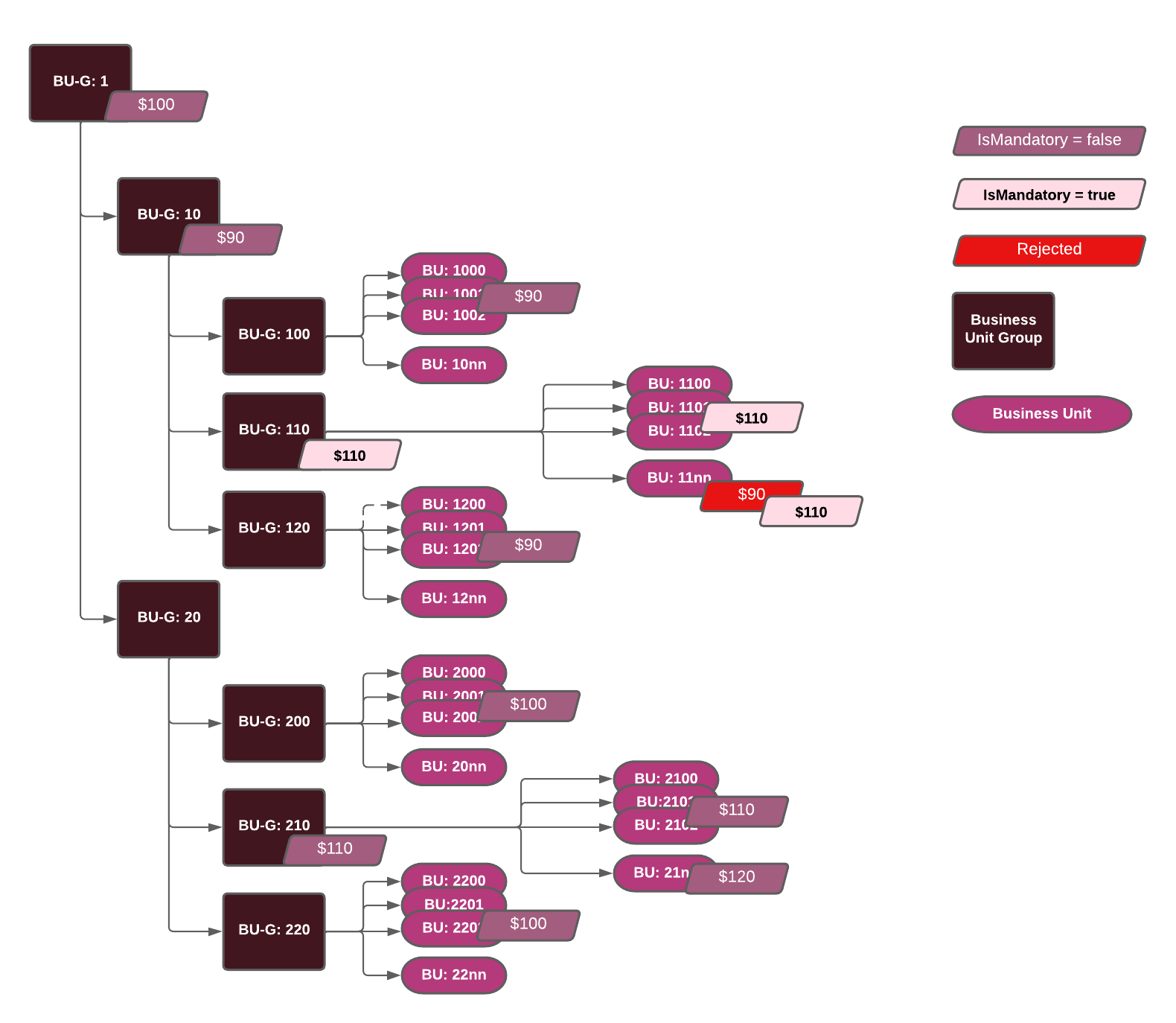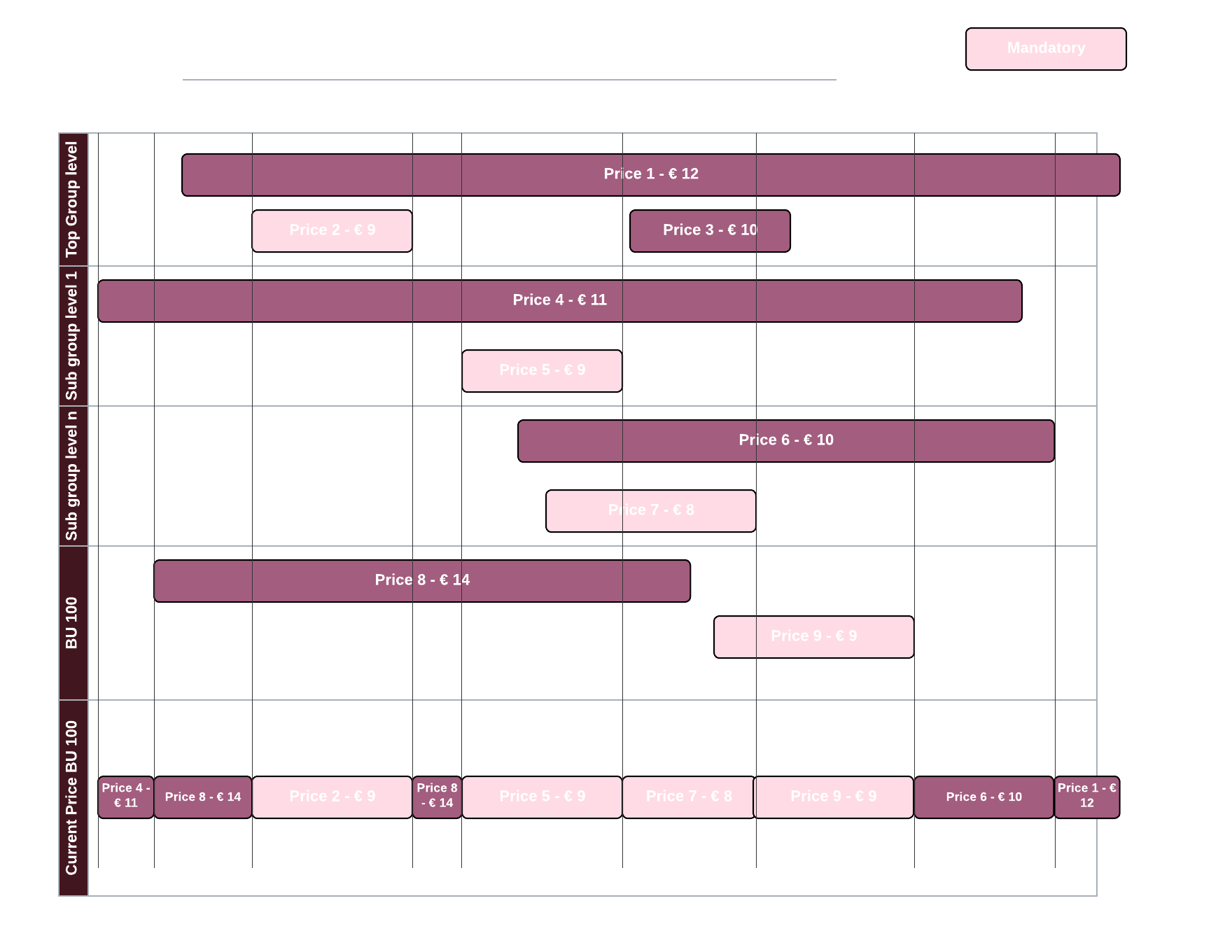Calculate prices
Calculate Price Specifications
Hii Retail supports multiple Price Types and can calculate the correct Price Specification for each Business Unit.
If you maintain Price Specifications for groups of Business Units, Hii Retail uses inheritance logic to calculate the correct price for each Business Unit.
Price Specification Inheritance
Price Specifications inherit like other entities, with some differences. The IsMandatory property can be set to true to override information set lower in the hierarchy. This is useful for organizations managing prices centrally.

You can force a price onto underlying business units, overriding local prices when needed.
Price Specification Processing
Hii Retail receives Price Specifications for either a Business Unit or a Business Unit Group. This information is preserved for calculations.
Recommendation: Use a unique
idfor each Price Specification, similar to a primary key in a database. For scheduled prices, always update byid.
See Future Price Specifications for more.

The
isMandatoryproperty can reverse inheritance and force prices down the hierarchy. Note thatPrice 3in the diagram never becomes active for the Business Unit.
Current Price Specifications
A Price Specification with a validFrom date in the past or present is treated as current and applied immediately. The previous current Price Specification is marked isCurrent: false, and the new one is marked isCurrent: true.
Future Price Specifications
A Price Specification with a future validFrom date is scheduled for activation. It is marked isCurrent: false until the activation date, when it becomes isCurrent: true.
Note: Future prices must be updated by their
id, not byvalidFrom.
When a Price Specification Ends
A validTo date ends a Price Specification's lifetime. Hii Retail automatically falls back to the last valid Price Specification. An Item will never be left without an active SALES Price Specification.
Price Specifications with a
validTomore than 5 years ahead are treated as if novalidTois specified.
Price Specification Cleanup
New Price Specifications (with new ids) are expected for each current price change. Old Price Specifications are removed if replaced and older than 30 days.
Cleanup does not remove Price Specifications eligible to become current again.
Model and Variant Item Pricing
When using Model and Variant items, you can adjust prices for all variants by updating the model item. Individual variants can also have specific prices.
For example, set a price on the Nike Air Max model item to update all variants. To price a specific variant differently, update that variant after the model price update.